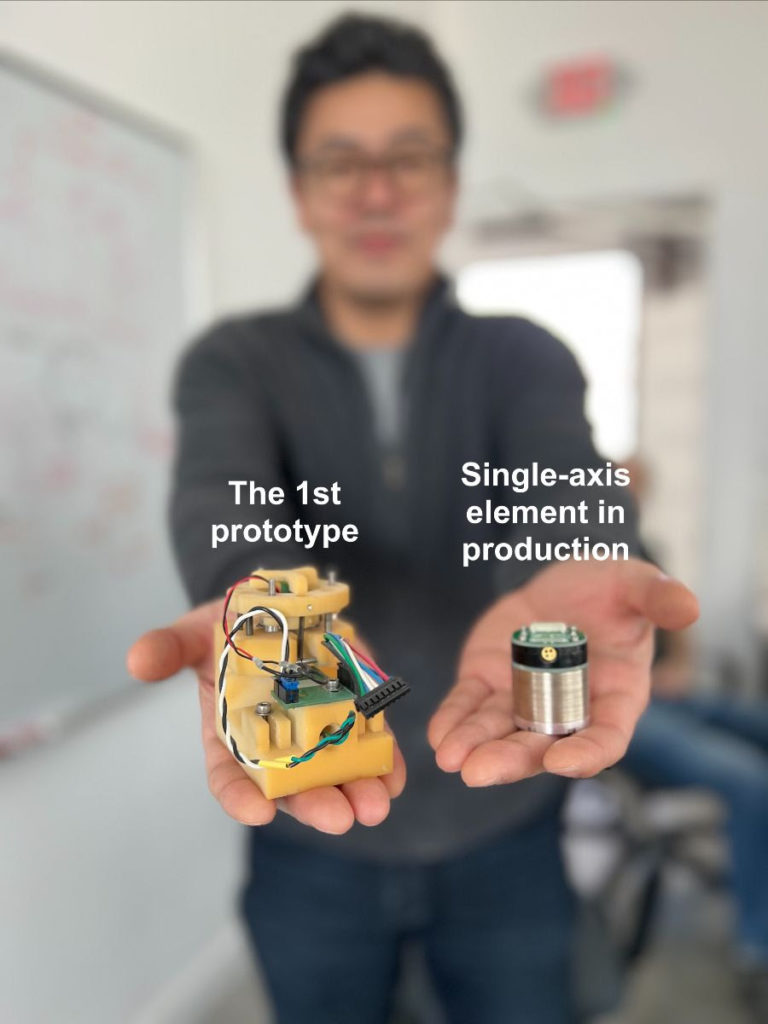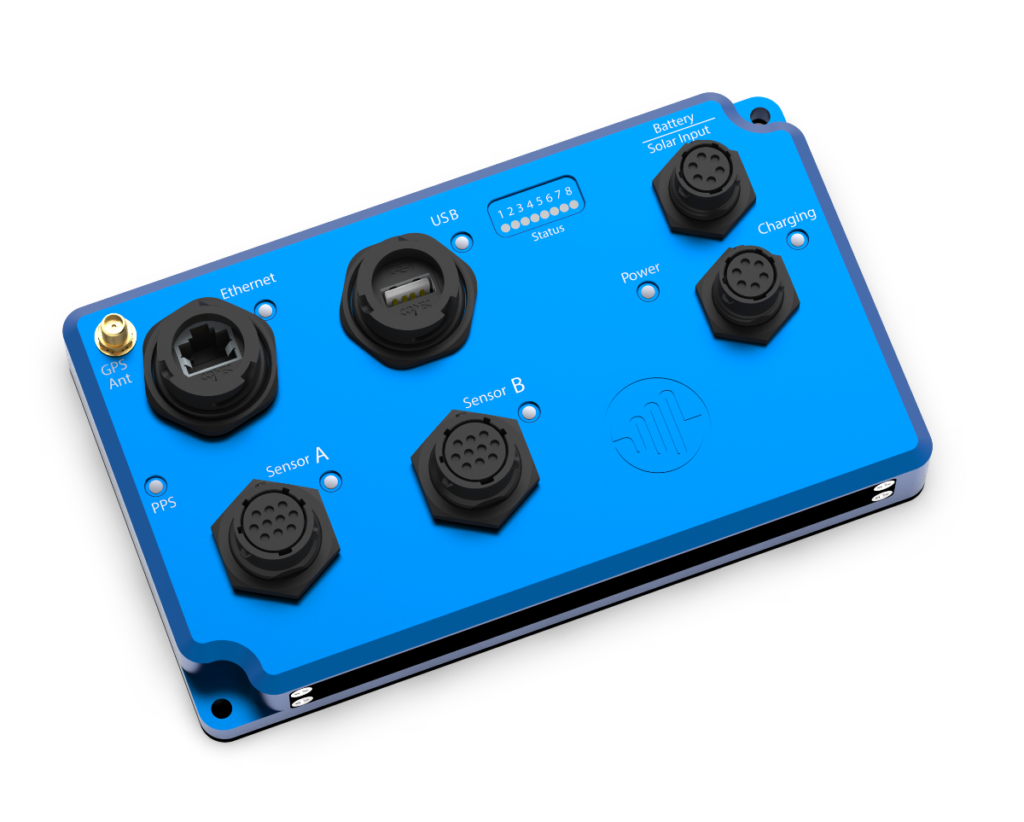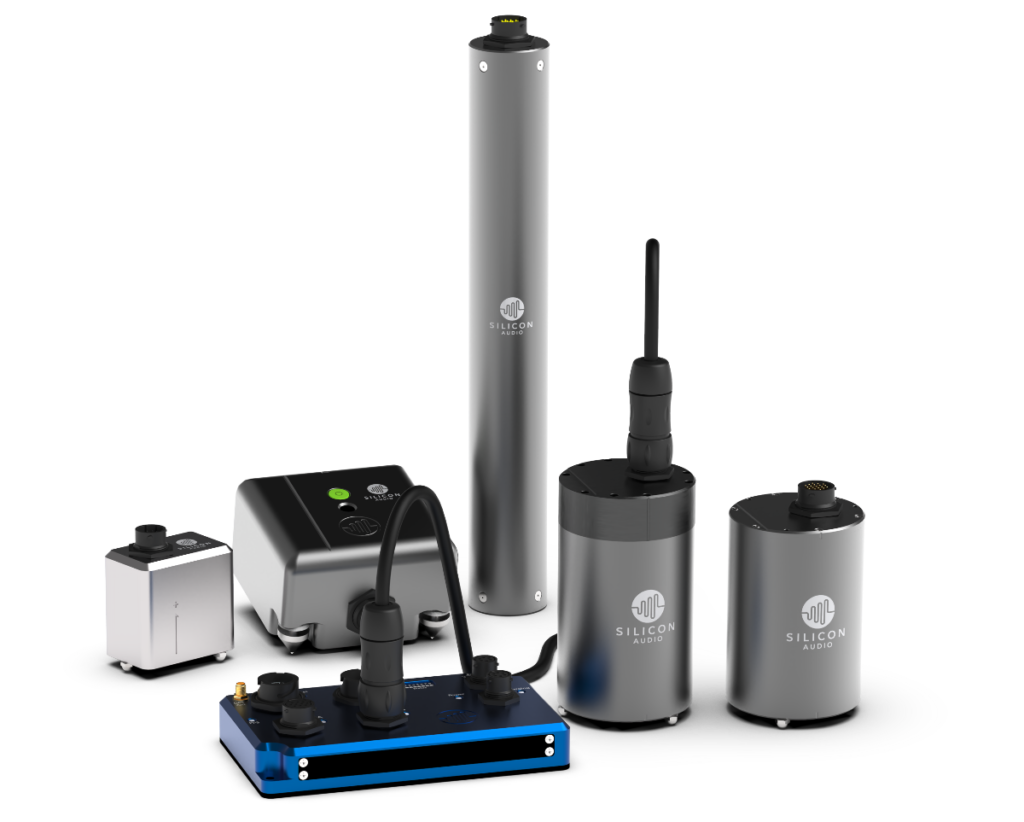The 10 Year Development History of Silicon Audio
In our very first newsletter, we reviewed the history of Silicon Audio’s inception with micromachined-electromechanical systems (MEMS) and our audio beginning with the initial shift into Seismic. For this post, we’ll be breaking down the prototypes that led to the model you are familiar with today.
The first sensor functioned more as a crude version of a seismometer. It was a concept validation that a non-MEMS, interferometer built at a macro scale could be created and was built out of 3-D printed materials. Although the prototype was bare boned, it performed with high fidelity optical readout, detecting 20 femtometers (fm) of displacement – that’s 1/10,000th the size of a hydrogen atom!


Fast forward and now and we have the optics all combined into one cell. The proof mass lives in the silver component while the optics and lasers live in the black component thus successfully creating a singular optical cell in a compact design.
We took this optical sensor and successfully created a 3-axis model system. The sensor below was the first to be demoed out into the world. As our success continued, we built out a model that worked with Fairfield Nodal (now Fairfield Geotechnologies) for 3-axis seafloor nodes and partnered with oil and gas companies to develop a customized product. This was the first-time components started to look reminiscent of the current sensing element we use today.
After the steady success of the analog sensors, a need for a digital system became increasingly necessary to facilitate quick plug seamless setups, and to take full advantage of the sensor’s extreme dynamic range. The latter requires double digitizing using two 24-bit analog-digital converters (ADCs). This was the motivation behind the creation of the digitizer. Our digitizer works in combination with the geo computer to create a fully digital system that can capture a high dynamic range while attaining the data with a time reference and the ability to store this data in an accessible format.

Today, we have a breadth of products that range from 3-axis to 1-axis to digital systems that can be modulated to fit your analog sensor. Don’t hesitate to reach out to us for more information about customized products based upon your research needs!

